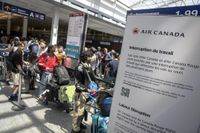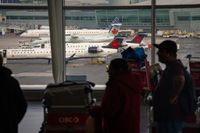After a turbulent week that left tens of thousands of travelers stranded and Canada's busiest airports in disarray, Air Canada and its flight attendants now stand at a pivotal crossroads. The strike that paralyzed the nation’s largest airline ended on Tuesday, August 20, 2025, when Air Canada and the union representing its 10,000 flight attendants reached a tentative agreement. However, the resolution is far from certain, as frustration over wage increases threatens to derail the deal before it takes effect, according to CTV National News.
The strike, which began on August 16, 2025, followed months of fruitless negotiations. The walkout triggered the cancellation of thousands of flights, leaving tens of thousands of passengers scrambling for alternatives or stuck in terminals. As reported by The Globe and Mail, the scale of disruption was unprecedented in recent memory for the Canadian airline industry. The financial blow to Air Canada is expected to be significant in the current quarter, but analysts suggest the long-term impact may be contained—provided the tentative deal holds.
The heart of the new four-year agreement is a set of hourly raises for flight attendants, amounting to approximately 16 to 20 percent over the contract’s duration. In addition to the pay bump, the deal addresses a longstanding grievance: compensation for pre- and post-flight duties. Previously, these essential tasks—preparing the cabin before passengers board and finishing up after they disembark—were unpaid, a point of deep contention among union members. The new agreement ensures that flight attendants will now be paid a share of their hourly wage for this work, a concession union officials fought hard to secure.
Yet, as the dust settles from the strike, a new storm may be brewing. According to CTV National News, there is palpable frustration among many flight attendants regarding the wage increases outlined in the tentative agreement. Some members feel the pay improvements do not go far enough to reflect the demands and risks of their jobs. This sentiment could prove decisive in the coming days as union members prepare to cast their votes on the deal.
Voting on the agreement is scheduled to run from August 27 to September 6, 2025. Only the hourly pay portion of the four-year deal will be up for approval. The results are expected to be released publicly within 24 hours of the vote’s conclusion, as reported by The Globe and Mail. If the contract fails to win majority support, both sides have agreed to return to mediated talks for three days. Should those discussions falter, the dispute will move to arbitration—a process that could further delay a final resolution and potentially reignite unrest within the airline’s ranks.
For Air Canada, the stakes are high. The company is still reeling from the logistical and financial chaos wrought by the strike. Thousands of canceled flights have not only disrupted passengers’ plans but also dented the airline’s reputation for reliability. The financial hit, while significant in the short term, is expected to be manageable if operations stabilize quickly and the workforce returns to normal productivity, analysts told The Globe and Mail.
For travelers, the resumption of flights after the strike’s end brought a sigh of relief, but uncertainty lingers. Should the tentative deal be rejected and a new round of negotiations or arbitration ensue, the specter of further disruptions cannot be ruled out. Many passengers, especially frequent flyers and business travelers, are warily watching the outcome, hoping for a swift and lasting resolution.
The union’s leadership has emphasized the importance of the improvements in the agreement, particularly the new compensation for pre- and post-flight work. They argue that recognizing and paying for these duties is a matter of fairness and respect for the profession. However, the issue of overall wage growth remains contentious. Some flight attendants, especially those with longer tenures or higher seniority, feel the increases do not adequately address years of stagnant wages and inflationary pressures.
As the vote approaches, both the airline and the union are working to persuade members of the deal’s merits. Air Canada’s management has highlighted the company’s commitment to improving working conditions and pay, while also stressing the need for stability and the avoidance of further disruptions. Union officials are urging members to consider the gains achieved, particularly the breakthrough on pre- and post-flight compensation, but acknowledge the legitimate concerns about wage levels.
Should the deal be ratified, Air Canada will have cleared a major hurdle in restoring normalcy to its operations and rebuilding trust with both employees and customers. If not, the company and its workforce face the prospect of renewed negotiations—and the possibility that the fragile peace achieved after the strike could quickly unravel.
The outcome of this vote carries implications beyond Air Canada. Labor disputes in the airline industry often set precedents for other carriers and sectors, especially regarding pay structures and compensation for previously unpaid work. The attention paid to this agreement by both labor advocates and industry analysts reflects its potential to influence future negotiations elsewhere in Canada and beyond.
For now, all eyes are on the union’s membership. The days ahead will determine whether the tentative peace holds or whether the summer of 2025 will be remembered as the beginning of a protracted battle between Air Canada and its flight attendants. The vote’s result, expected shortly after September 6, will mark either a turning point toward stability or the start of another chapter in a saga that has already upended the lives of workers and travelers alike.
With the stakes so high and emotions running strong on both sides, the next week promises to be a defining moment for Air Canada’s workforce and the broader Canadian aviation industry. The decision now rests with the flight attendants themselves, whose verdict will shape not only their own futures but also the travel plans of millions across the country.

